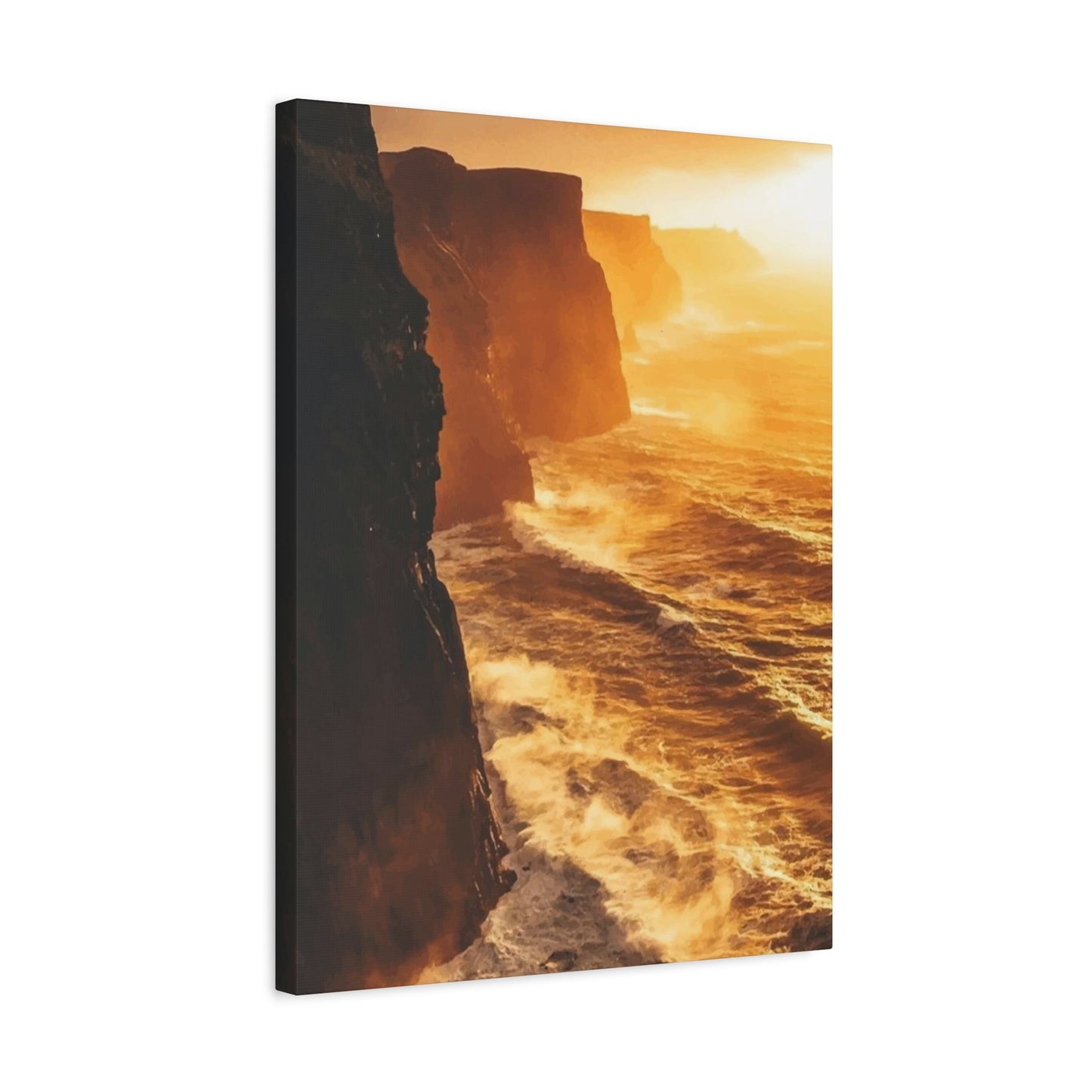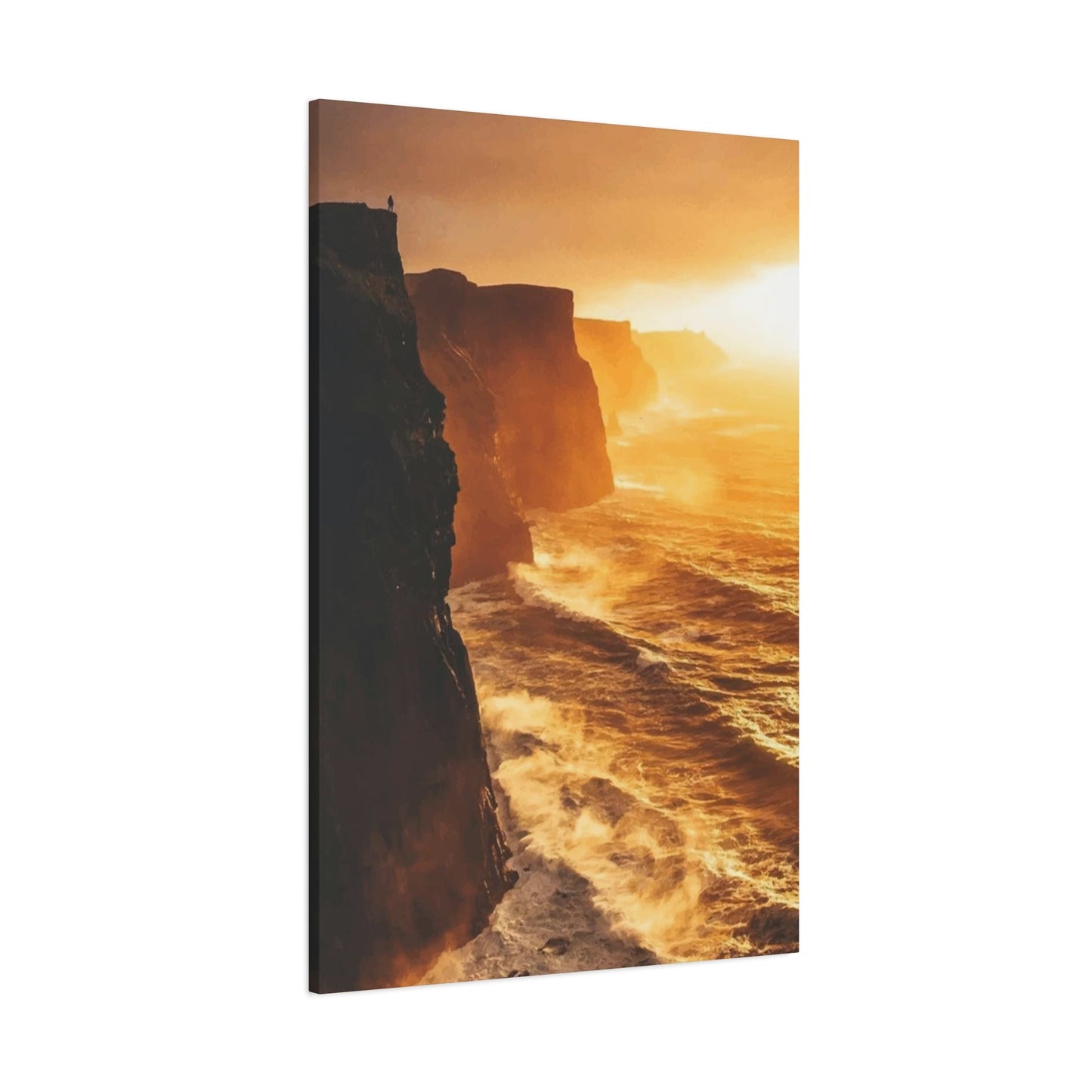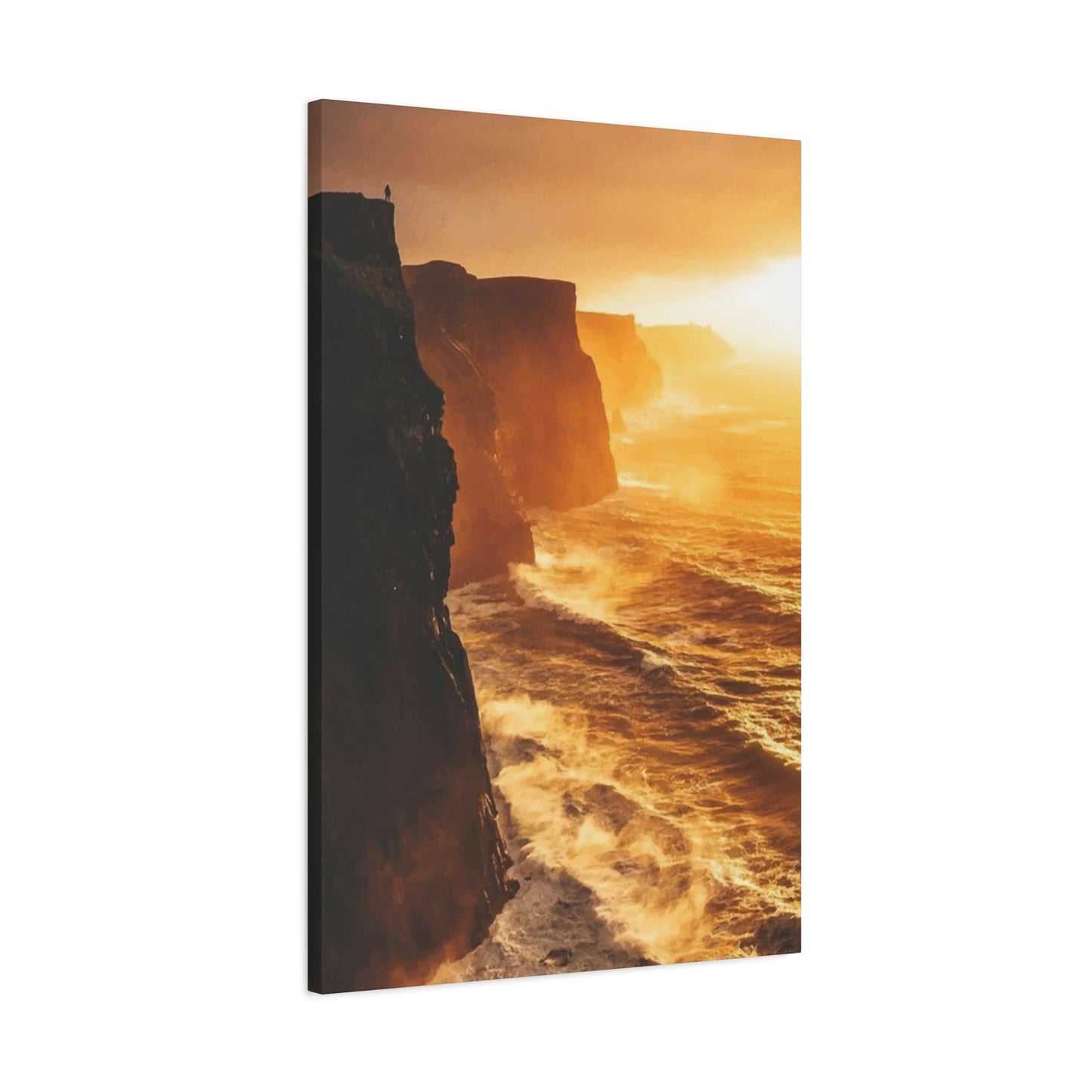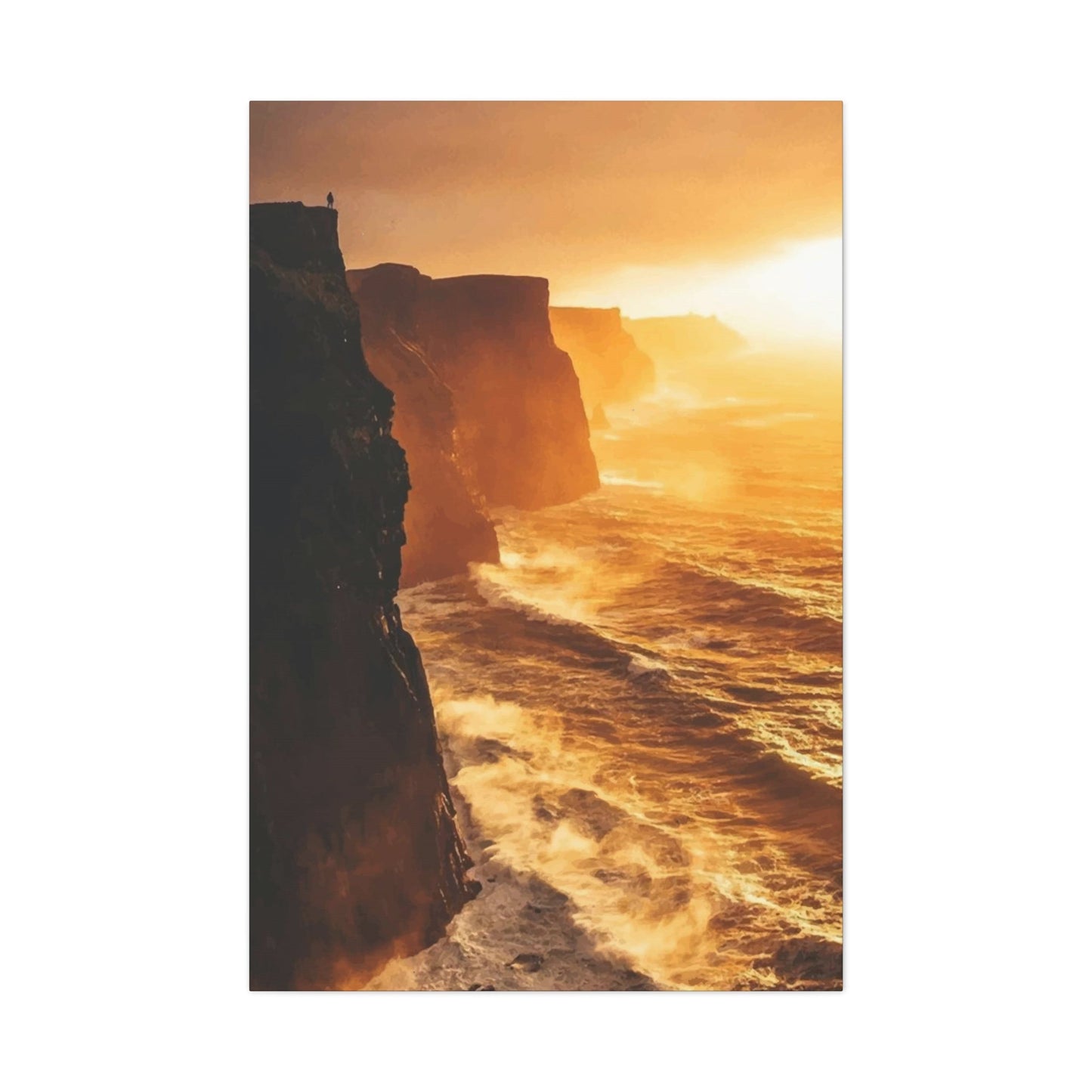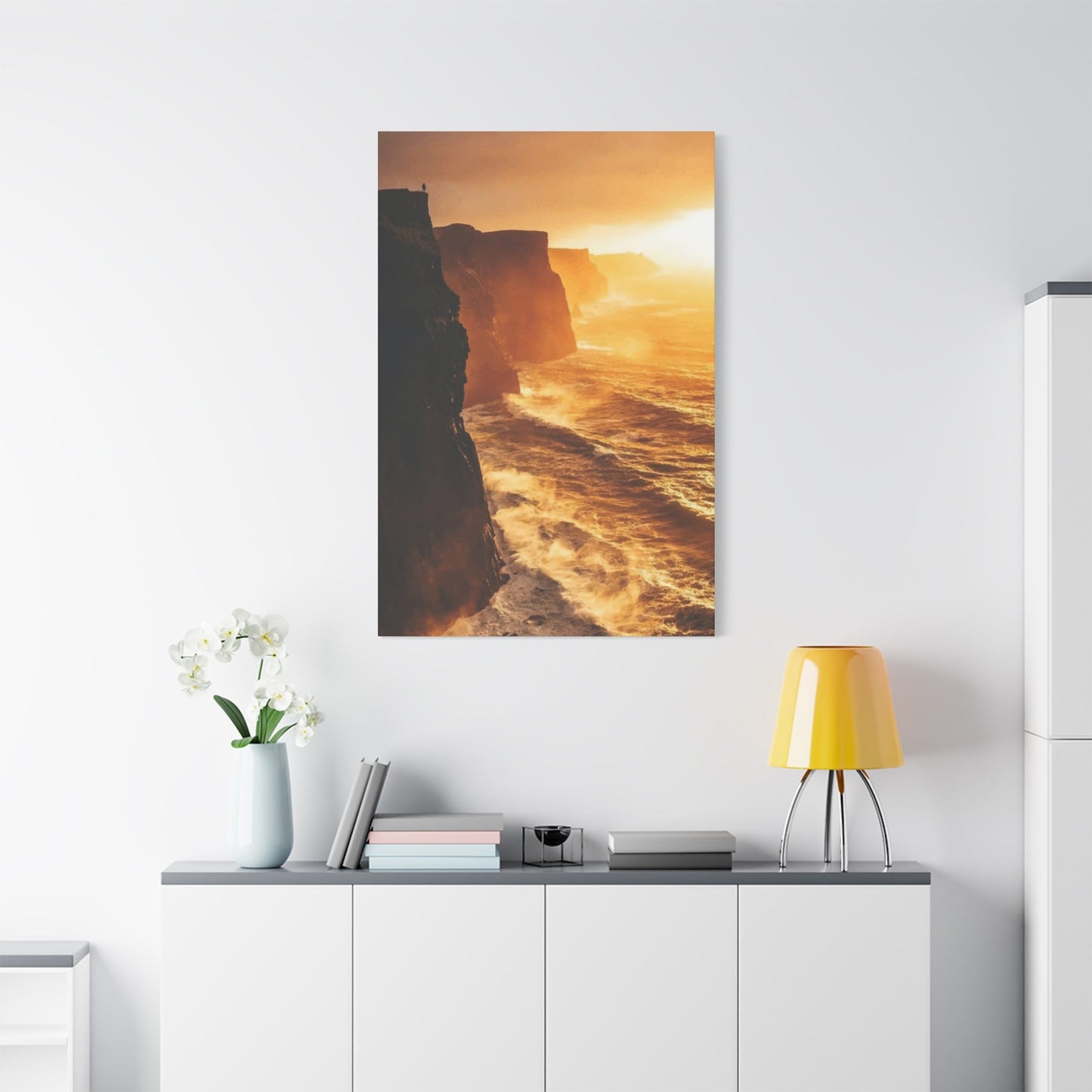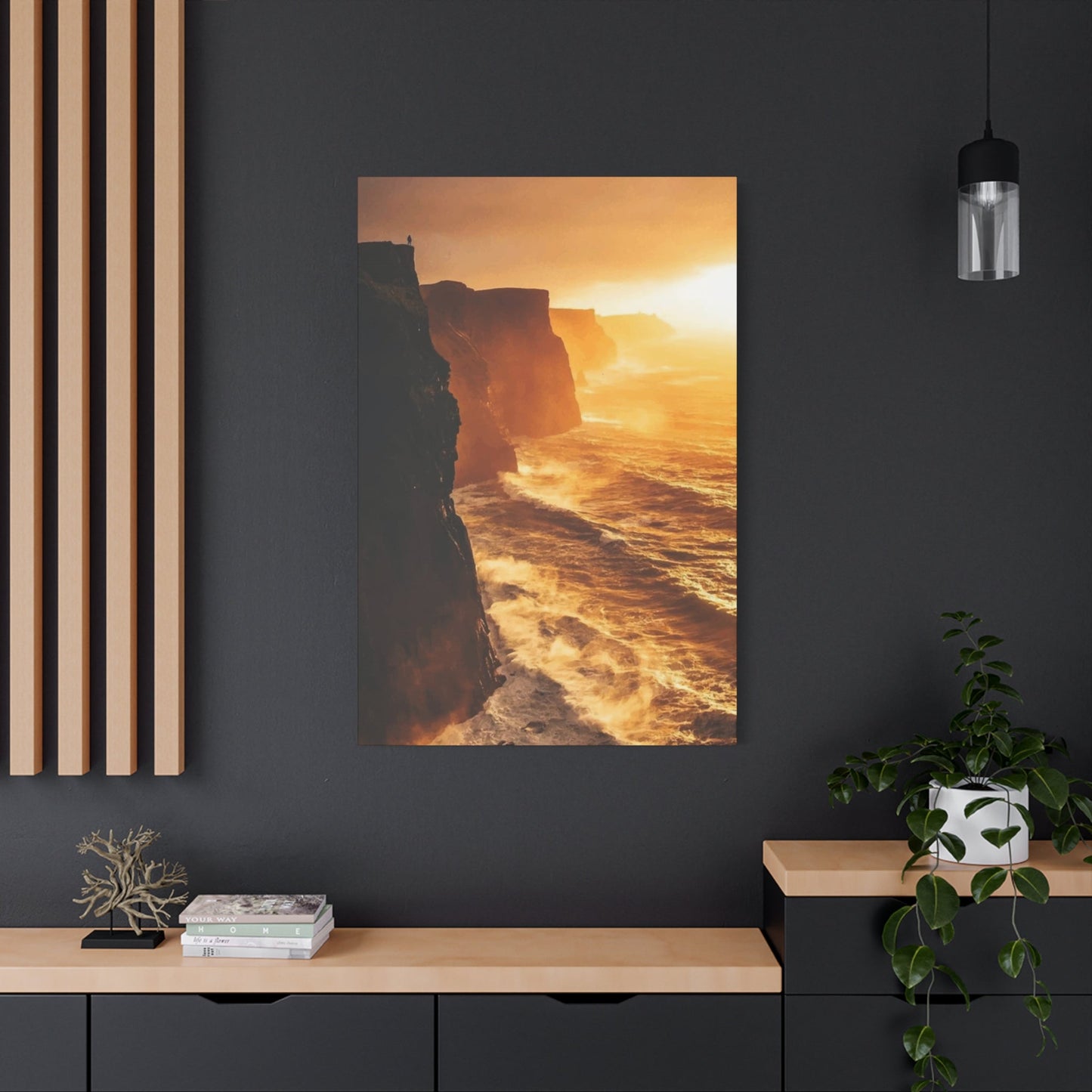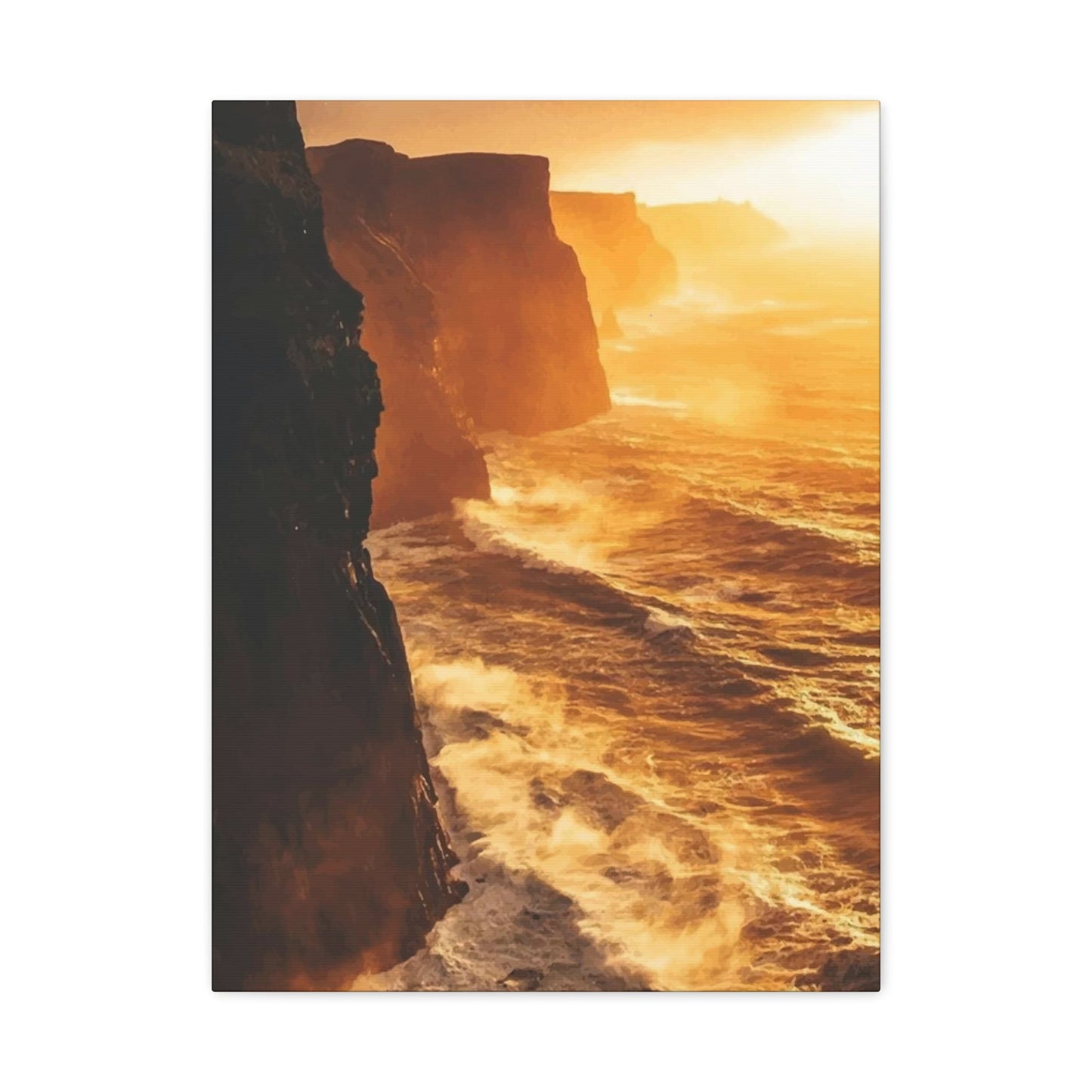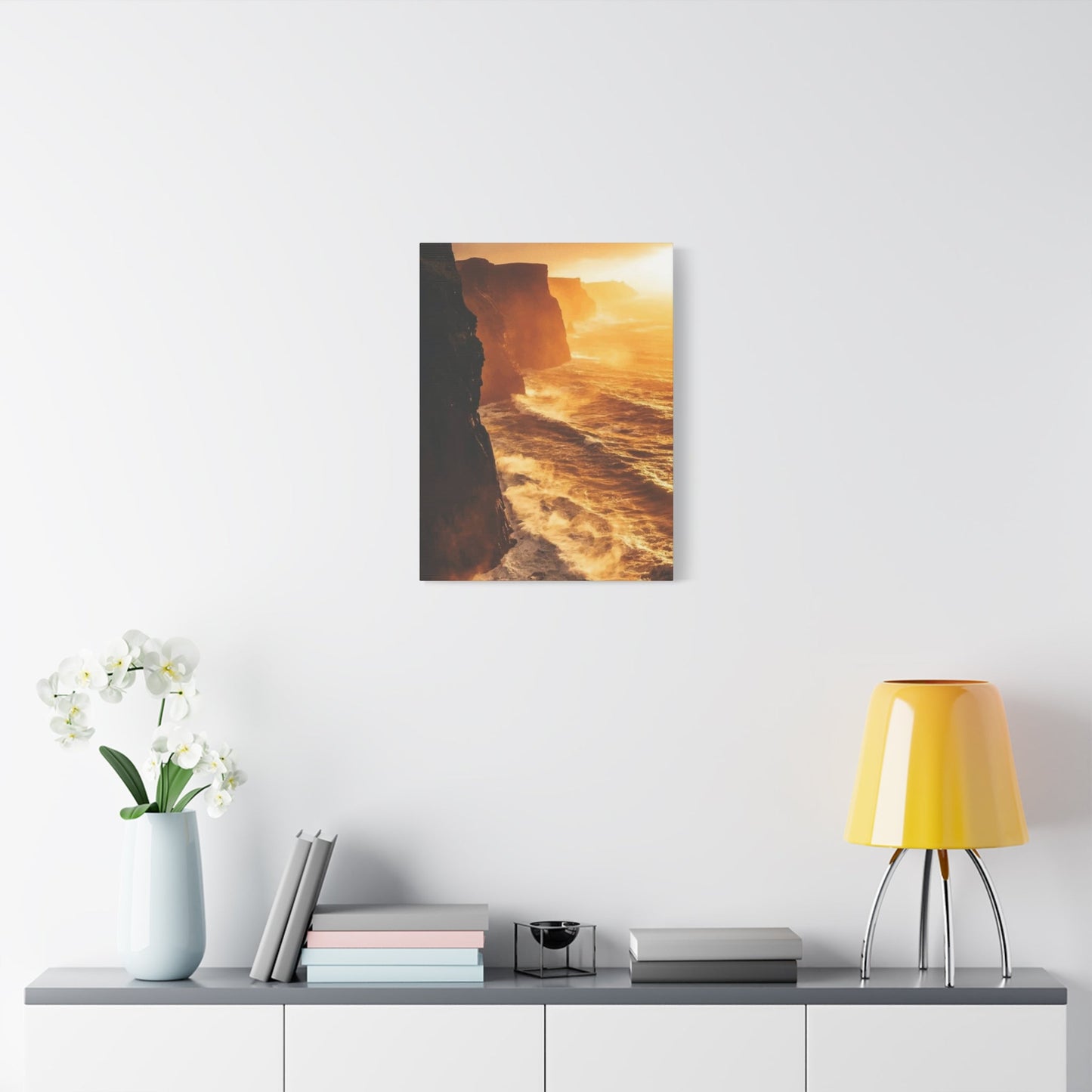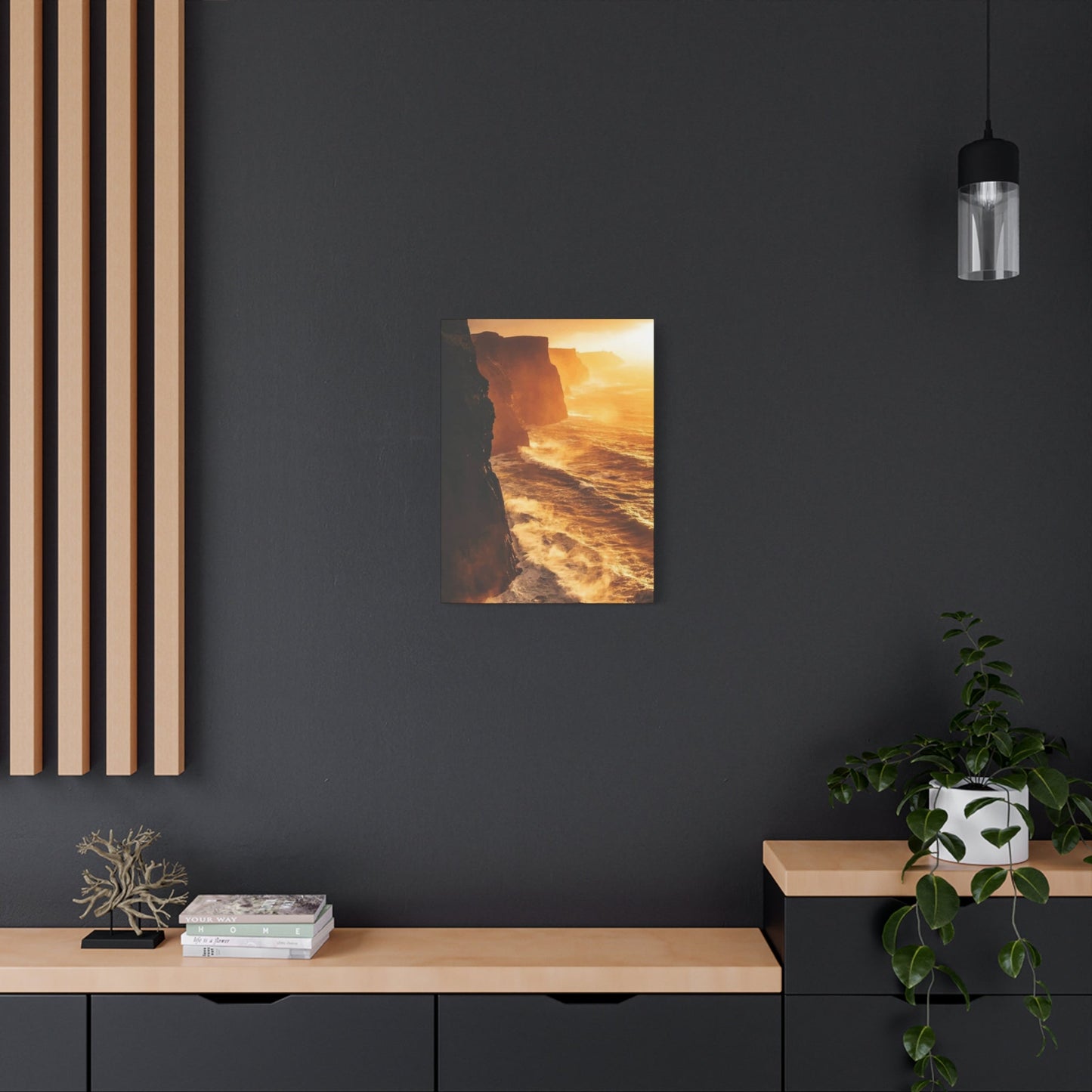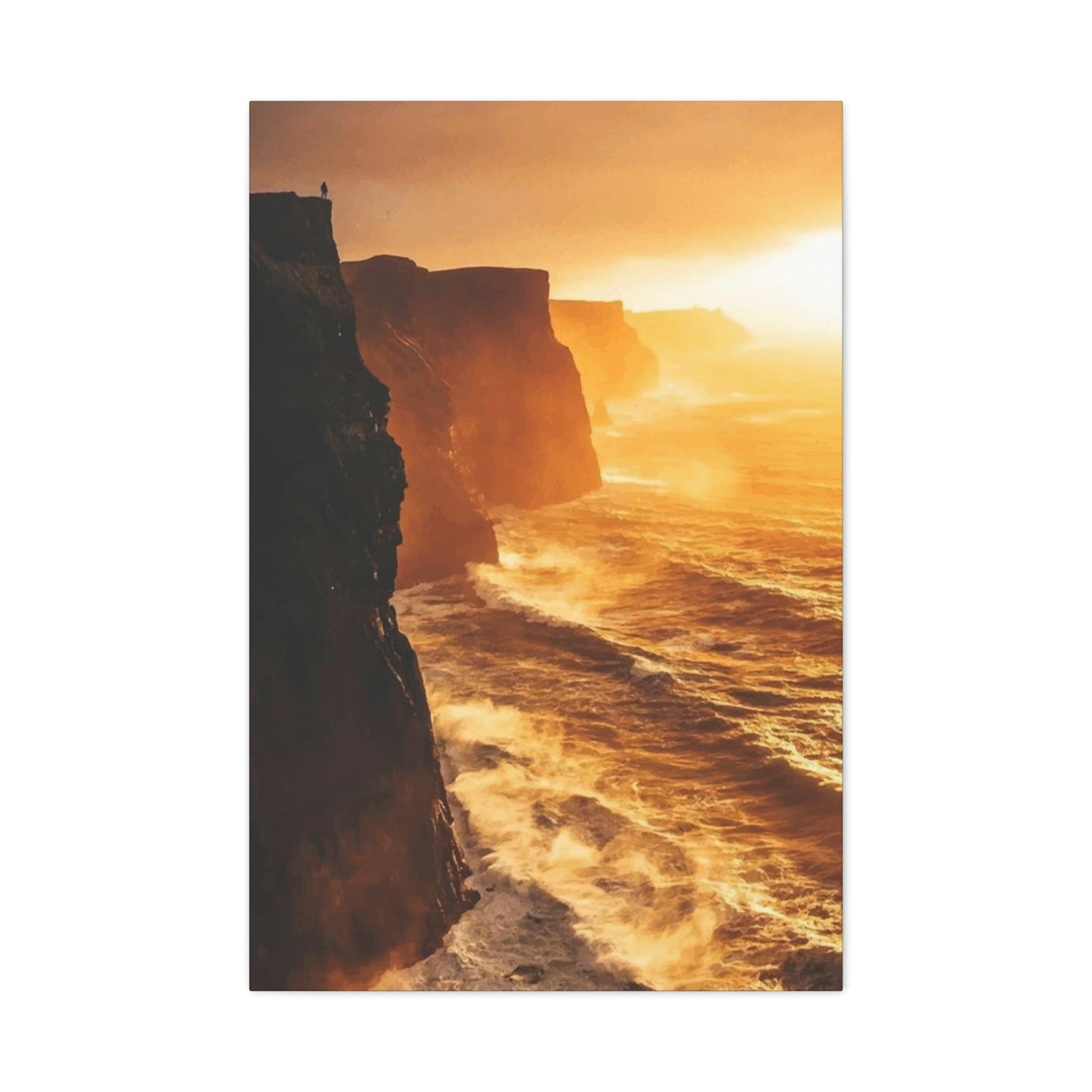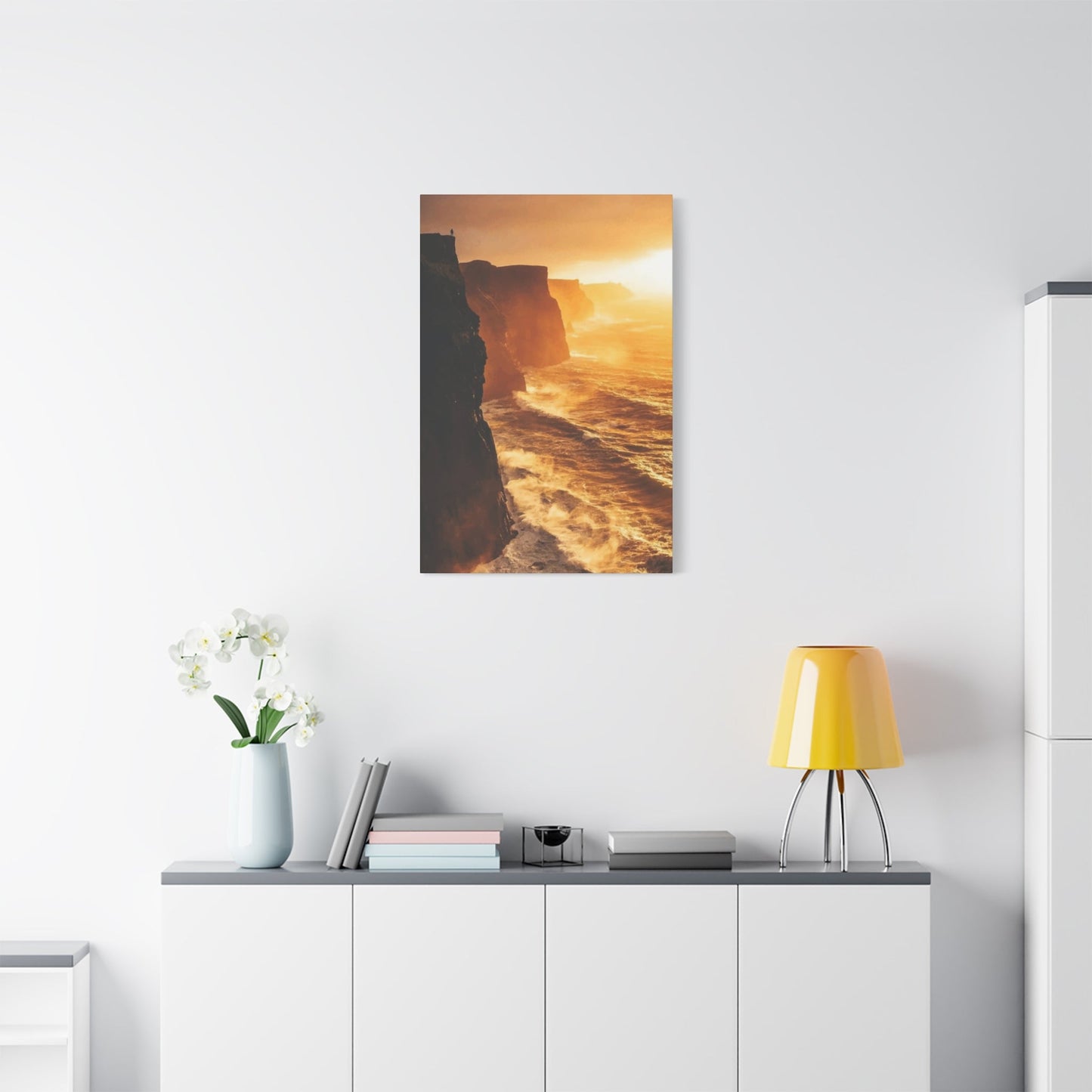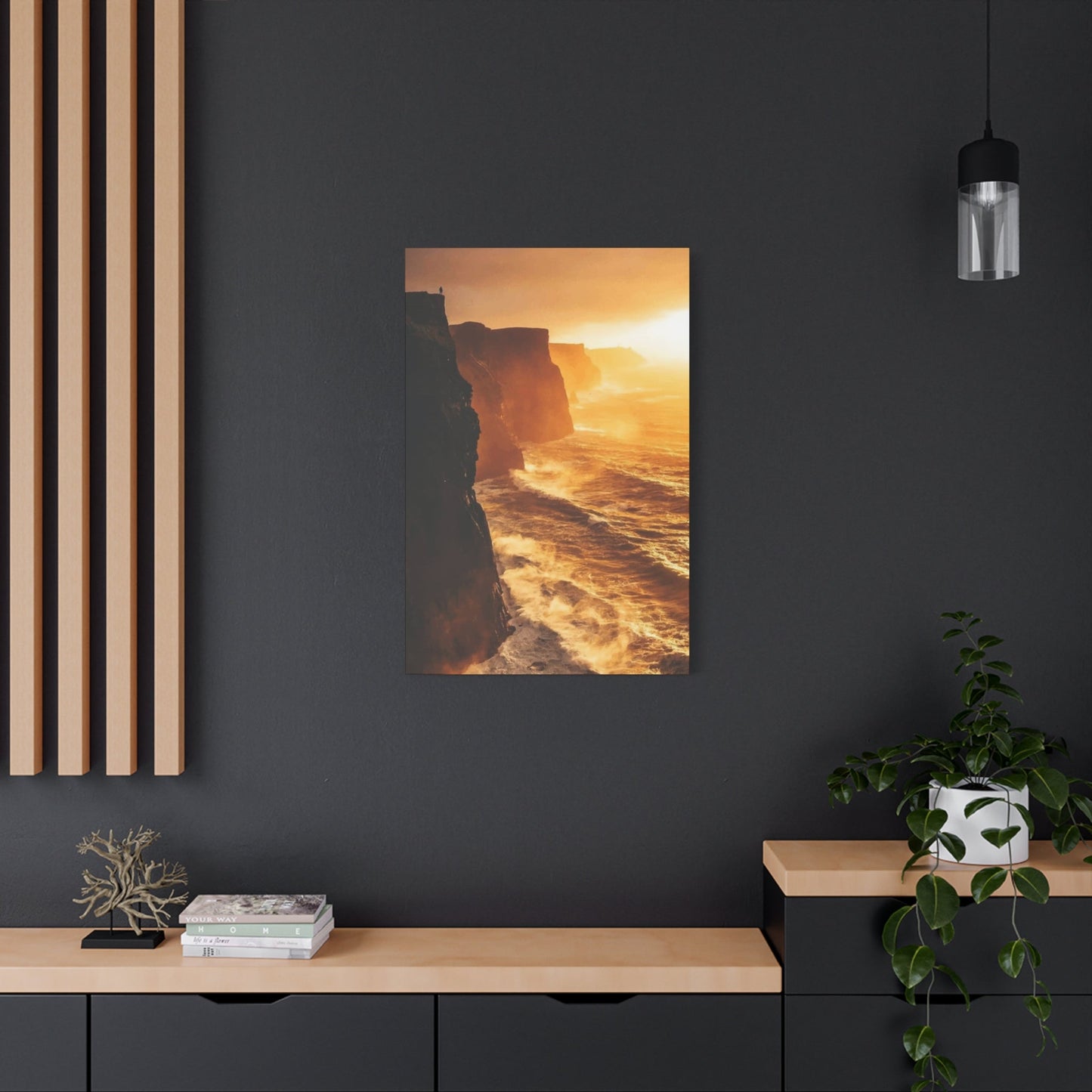Supporting Local Artisans: The Charm of Handmade Ireland Wall Art
Ireland's breathtaking landscapes, rich cultural heritage, and timeless traditions have inspired countless artists throughout history. The enchanting beauty of the Emerald Isle translates magnificently into visual masterpieces that capture the essence of this remarkable nation. From dramatic coastal cliffs to charming rural cottages, Irish-themed wall art brings the magic of Ireland directly into your living environment, creating an atmosphere of warmth, culture, and natural splendor.
The artistic representation of Irish themes encompasses a vast spectrum of styles, mediums, and subjects. Whether you're drawn to the rugged beauty of windswept coastlines, the mystical allure of ancient Celtic symbols, or the vibrant energy of contemporary Irish culture, there exists a perfect piece of wall art to reflect your personal connection to Ireland's enduring charm. These artistic expressions serve not merely as decorative elements but as windows into the soul of a nation renowned for its storytelling, music, literature, and profound connection to the natural world.
Contemporary collectors and enthusiasts increasingly recognize the value of authentic Irish-themed artwork in creating meaningful and culturally rich environments. The popularity of Irish wall art extends far beyond those with Irish ancestry, appealing to anyone who appreciates the unique combination of natural beauty, cultural depth, and artistic excellence that characterizes the finest examples of Hibernian-inspired creativity.
Legendary Emerald Isle Vistas in Artistic Expression
The magnificent landscapes of Ireland provide an endless source of inspiration for artists seeking to capture the raw beauty and emotional resonance of this extraordinary island nation. The dramatic interplay of rolling green hills, ancient stone structures, and ever-changing skies creates a visual symphony that translates beautifully into various artistic mediums. These landscape-focused artworks serve as powerful reminders of Ireland's natural majesty and the profound connection between the Irish people and their ancestral homeland.
Professional landscape artists who specialize in Irish scenery understand the unique challenges and rewards of capturing the ethereal quality of Irish light. The famously changeable weather patterns create moments of extraordinary beauty, where golden sunlight breaks through storm clouds to illuminate emerald fields, creating scenes of almost supernatural beauty. These fleeting moments of perfection require both technical skill and deep emotional understanding to translate effectively onto canvas or photographic medium.
The artistic interpretation of Irish landscapes extends beyond mere representation to capture the emotional and spiritual essence of specific locations. Many artists spend considerable time in Ireland, walking the ancient paths, experiencing the changing seasons, and developing an intimate understanding of how light, weather, and time of day transform familiar scenes into extraordinary visual experiences. This deep connection between artist and subject matter results in artwork that resonates with viewers on both aesthetic and emotional levels.
Regional variations in Irish landscape art reflect the diverse geography of the island, from the wild Atlantic coastline to the gentle rolling hills of the midlands. Each region possesses its own distinctive character and visual signature, which skilled artists capture through careful attention to color palettes, compositional elements, and atmospheric effects. The result is a rich tapestry of artistic interpretations that collectively represent the full scope of Irish natural beauty.
Collectors of Irish landscape art often develop preferences for specific regions or artistic styles, building collections that reflect their personal connections to particular locations or their appreciation for certain artistic approaches. Some gravitate toward highly realistic representations that serve as accurate documentary records of specific locations, while others prefer more interpretive approaches that emphasize emotional response over photographic accuracy. Both approaches have their place in the rich tradition of Irish landscape art.
The technical challenges of capturing Irish landscapes require artists to master the representation of complex atmospheric conditions, subtle color variations in vegetation, and the unique quality of Irish light. The prevalence of soft, diffused lighting conditions in Ireland creates opportunities for artists to explore subtle tonal relationships and delicate color harmonies that might not be possible in regions with harsher, more direct sunlight. These technical considerations contribute to the distinctive appearance of authentic Irish landscape art.
Majestic Clifftop Scenes on Canvas
The spectacular cliff formations along Ireland's western coastline represent some of the most dramatic and visually striking landscapes in the world. These towering precipices, carved by millennia of Atlantic storms, create natural amphitheaters where sky, sea, and stone converge in displays of raw natural power and beauty. Canvas prints featuring these magnificent cliff scenes bring the majesty and grandeur of Ireland's coastal fortress directly into contemporary living environments.
Artists who specialize in cliff scenery face the challenge of capturing both the immense scale and the intimate details that make these locations so compelling. The interplay between massive geological formations and delicate wildflowers clinging to rocky crevices creates visual contrasts that skilled artists exploit to create compositions of extraordinary impact. The constant motion of waves against stone, combined with the ever-changing patterns of light and shadow across cliff faces, provides endless opportunities for artistic interpretation.
The emotional impact of cliff scenes in wall art derives partly from their ability to evoke feelings of awe, contemplation, and connection to natural forces beyond human control. These powerful landscapes remind viewers of the enduring strength of the natural world and the relatively brief passage of human existence within geological time scales. This philosophical dimension adds depth and meaning to cliff-themed artwork beyond its obvious aesthetic appeal.
Different artistic approaches to cliff scenery produce vastly different emotional responses in viewers. Highly detailed, photorealistic representations emphasize the actual physical experience of standing at cliff edges, while more impressionistic treatments focus on capturing the emotional and atmospheric qualities of these dramatic locations. Abstract interpretations of cliff themes can distill the essential visual elements into powerful symbolic representations that resonate on psychological and spiritual levels.
The color palettes associated with cliff scenes vary dramatically depending on weather conditions, time of day, and seasonal changes. Storm-lit cliffs with dark, brooding skies create entirely different moods than the same locations bathed in golden evening light or shrouded in mysterious morning mists. Skilled artists understand how to manipulate these color relationships to create specific emotional responses and to guide viewers' attention to key compositional elements.
Technical considerations in cliff scene artwork include the accurate representation of geological structures, water movement, and atmospheric perspective. The massive scale of cliff formations requires careful attention to proportional relationships and the use of atmospheric perspective to convey distance and depth. The constant motion of ocean waves presents additional challenges in creating convincing representations of water in various states of agitation, from gentle swells to crashing breakers.
The popularity of cliff scene artwork reflects a broader cultural fascination with dramatic natural landscapes and the human desire to connect with powerful natural forces. In an increasingly urbanized world, these images serve as reminders of the natural world's continued existence and power. They provide opportunities for contemplation, escapism, and connection to something greater than the immediate concerns of daily life.
Coastal Panoramas for Domestic Enhancement
Ireland's extensive coastline offers an extraordinary variety of scenic possibilities, from sheltered harbors with colorful fishing boats to wild, exposed headlands where Atlantic storms unleash their full fury. These coastal scenes provide artists with rich subject matter that combines natural beauty, human activity, and cultural heritage in visually compelling compositions. Coastal panorama artwork brings the refreshing energy of seaside environments into domestic settings, creating atmosphere of relaxation and connection to maritime traditions.
The diversity of Irish coastal scenes reflects the complex geology and varied exposure conditions found around the island's perimeter. Sheltered eastern coasts present entirely different visual characteristics than the storm-battered western shores, providing artists with a rich palette of scenic options. Some coastal areas feature dramatic rocky formations and crashing waves, while others showcase gentle sandy beaches, peaceful tidal pools, and picturesque fishing villages nestled in protective harbors.
Contemporary coastal artwork often incorporates human elements that speak to Ireland's maritime heritage and the continuing relationship between coastal communities and the sea. Fishing boats, lighthouses, coastal cottages, and harbor infrastructure provide focal points that add narrative interest to purely landscape-based compositions. These human elements also help establish scale and provide viewers with points of reference for understanding the true magnitude of coastal landscapes.
The seasonal variations in coastal scenery provide artists with opportunities to explore different moods and atmospheric conditions throughout the year. Summer coastal scenes might feature bright blue skies, calm seas, and abundant marine life, while winter compositions could emphasize the raw power of storm systems and the dramatic interplay between dark clouds and turbulent waters. Spring and autumn coastal scenes offer their own unique characteristics, with changing vegetation patterns and distinctive lighting conditions.
Color relationships in coastal artwork require careful consideration of the complex interactions between sky, water, and land-based elements. The reflective properties of water surfaces create opportunities for artists to explore subtle color harmonies and dynamic lighting effects. The challenge lies in creating convincing representations of water that capture both its transparency and its ability to mirror and modify surrounding colors and forms.
The emotional appeal of coastal scenes stems partly from their association with relaxation, vacation experiences, and escape from urban pressures. Many people maintain strong positive associations with coastal environments, whether from childhood memories, romantic experiences, or simply the universal human attraction to the meeting place of land and sea. This emotional resonance makes coastal artwork particularly effective in creating welcoming and peaceful domestic environments.
Practical considerations in selecting coastal artwork include the scale of the piece relative to the intended display location, the color relationships with existing furnishings, and the overall mood or atmosphere the artwork is intended to create. Large-scale coastal panoramas can serve as dramatic focal points in living rooms or dining areas, while smaller, more intimate coastal scenes might be appropriate for bedrooms, bathrooms, or hallways.
Authentic Irish Countryside Dwellings
The traditional cottages scattered throughout the Irish countryside represent one of the most beloved and recognizable symbols of Irish rural life. These charming structures, with their distinctive thatched roofs, whitewashed walls, and colorful doors, embody the essence of Irish hospitality and the enduring connection between the Irish people and their agricultural heritage. Artistic representations of Irish cottages capture not only the physical characteristics of these buildings but also the cultural values and lifestyle traditions they represent.
The architectural evolution of Irish cottages reflects centuries of adaptation to local climate conditions, available building materials, and changing social and economic circumstances. Traditional construction techniques utilizing local stone, timber, and thatching materials created buildings that harmonized naturally with their surrounding landscapes. These structures appear to emerge organically from the Irish countryside, creating scenes of remarkable visual harmony between human habitation and natural environment.
Artists who specialize in cottage scenes face the challenge of capturing both the architectural details that make each building unique and the broader landscape context that gives these structures their meaning and emotional impact. The relationship between cottage and landscape is crucial to the success of these compositions, as isolated buildings lack the environmental context that makes Irish cottage scenes so appealing to viewers seeking connection to rural traditions and simpler ways of life.
The seasonal variations in cottage scenery provide artists with opportunities to explore how these buildings interact with changing natural conditions throughout the year. Spring cottage scenes might feature blooming gardens and fresh green landscapes, while autumn compositions could emphasize the warm colors of turning leaves and the cozy security of human habitation as winter approaches. Each season offers its own unique aesthetic possibilities and emotional associations.
Color relationships in cottage artwork often emphasize the warm, earthy tones of natural building materials contrasted against the vivid greens of Irish vegetation. The traditional color palette of Irish cottages, featuring white or cream walls, dark thatched roofs, and brightly painted doors and window frames, provides artists with opportunities to create compositions that are both historically accurate and visually striking. The challenge lies in balancing these color relationships to create harmonious and appealing overall compositions.
The cultural significance of cottage imagery extends beyond mere architectural appreciation to encompass broader themes of heritage preservation, connection to ancestral traditions, and the value of sustainable, community-based ways of life. In an era of rapid urbanization and technological change, cottage artwork serves as a reminder of alternative approaches to living that emphasize harmony with natural systems and strong community relationships.
Contemporary interpretations of cottage themes allow artists to explore how traditional building forms might be adapted or reinterpreted for modern contexts. Some artists create highly realistic representations that serve as historical documents, while others take more creative approaches that emphasize the symbolic or emotional qualities of cottage imagery. Both approaches contribute to the ongoing cultural dialogue about tradition, modernity, and the preservation of meaningful cultural symbols.
The appeal of cottage artwork transcends cultural boundaries, attracting viewers who may have no direct connection to Irish culture but who respond to the universal themes of home, security, and harmony with nature that these images represent. This broad appeal makes cottage-themed artwork particularly versatile for various domestic and commercial applications, from residential decorating to hospitality industry environments that seek to create welcoming and comfortable atmospheres.
Metropolitan Dublin Visual Art and Urban Photography
Dublin's vibrant street art scene and distinctive urban architecture provide contemporary artists with rich subject matter that captures the dynamic energy of Ireland's capital city. The juxtaposition of historic Georgian facades with modern murals, traditional pubs with cutting-edge galleries, and ancient cobblestone streets with contemporary commercial districts creates a visual landscape that reflects Dublin's position as a bridge between Ireland's storied past and its evolving future. Urban photography and street art documentation preserve and celebrate these ephemeral expressions of cultural creativity.
The evolution of Dublin's street art reflects broader changes in Irish society, from traditional political murals to contemporary expressions of social consciousness, artistic innovation, and cultural diversity. Contemporary street artists in Dublin work within a rich tradition of public art while pushing boundaries and exploring new themes relevant to modern urban life. The temporary nature of much street art creates urgency in its documentation and adds poignancy to photographic records of these fleeting artistic expressions.
Professional urban photographers who specialize in Dublin street art must navigate complex relationships between artistic appreciation, cultural documentation, and respect for the communities where these works are created. The most successful urban art photography captures not only the visual qualities of individual artworks but also their environmental context and cultural significance within the broader landscape of Dublin's creative community.
The architectural photography of Dublin presents different but related challenges, requiring technical expertise in capturing the geometric relationships of urban structures while maintaining sensitivity to the historical and cultural significance of individual buildings. Georgian Dublin, with its elegant proportions and harmonious streetscapes, provides opportunities for photographers to explore classical architectural principles within contemporary contexts. The contrast between preserved historical districts and areas of rapid modern development creates visual tensions that skilled photographers can exploit to create compelling urban compositions.
Color relationships in Dublin urban photography reflect the complex interactions between historical building materials, contemporary architectural interventions, and the ever-changing patterns of urban lighting. The warm tones of Georgian brick and limestone contrast dramatically with the vivid colors of contemporary street art, while the gray Irish sky provides a neutral backdrop that allows architectural and artistic details to command attention. Understanding these color relationships is crucial for creating urban photographs that accurately represent Dublin's unique visual character.
The documentation of Dublin's urban art scene serves important cultural preservation functions, creating permanent records of temporary artistic expressions and contributing to broader discussions about the role of public art in urban environments. These photographic records become historical documents that future researchers and cultural historians can use to understand the artistic and social movements that shaped Dublin during specific historical periods.
Technical considerations in urban art photography include the management of challenging lighting conditions, the selection of appropriate focal lengths to capture both detail and context, and the development of working relationships with local artists and community members. Successful urban photographers understand that their work exists within complex social and cultural contexts that require sensitivity, respect, and ongoing engagement with the communities they document.
The commercial applications of Dublin urban art photography extend beyond traditional art markets to include tourism promotion, cultural education, and architectural documentation. High-quality urban photography can serve multiple purposes simultaneously, functioning as artistic expression, cultural documentation, and promotional material for Dublin as a destination for cultural tourism and creative industry development.
Historical Irish Cartography for Decorative Purposes
Vintage Irish maps possess a unique combination of historical significance, artistic beauty, and cultural resonance that makes them exceptional choices for wall decoration. These cartographic artifacts document the evolution of Irish geography, political boundaries, and place names while serving as windows into the perspectives and knowledge systems of their respective historical periods. The artistic elements of historical mapmaking, including decorative cartouches, compass roses, and illustrated topographical features, transform utilitarian documents into works of art suitable for contemporary display.
The development of Irish cartography reflects the complex political and cultural history of the island, with different mapping traditions emerging from Celtic, Norman, English, and indigenous Irish perspectives. Early maps often emphasized strategic military considerations, trade routes, or religious sites, while later cartographic works focused on agricultural potential, natural resources, or administrative boundaries. These shifting priorities are visible in the artistic and technical choices made by historical cartographers, creating maps that serve as historical documents as well as decorative objects.
Contemporary appreciation of vintage Irish maps extends beyond their historical value to encompass their aesthetic qualities and their ability to serve as conversation pieces that encourage exploration of Irish history and geography. The visual appeal of antique cartographic design, with its careful attention to typography, decorative elements, and color relationships, makes these maps particularly suitable for contemporary decorating schemes that value authenticity, craftsmanship, and cultural depth.
The reproduction of historical Irish maps for decorative purposes requires careful attention to color accuracy, paper quality, and printing techniques that preserve the visual character of original documents while creating durable and attractive display pieces. High-quality reproductions can make rare and fragile historical maps accessible to contemporary collectors while preserving originals from the damage associated with display and handling. Digital reproduction technologies now allow for extremely accurate color matching and detail reproduction that rivals traditional printing methods.
Regional variations in Irish mapping reflect the diverse geographical and cultural characteristics of different areas within Ireland. Maps focusing on specific counties, cities, or geographic features provide opportunities for individuals to celebrate personal connections to particular locations while contributing to broader decorative schemes that emphasize Irish heritage and cultural identity. The availability of maps at various scales, from detailed city plans to broad regional overviews, allows for flexible decorative applications in different types of environments.
The educational value of historical Irish maps makes them particularly appropriate for environments where learning and cultural appreciation are valued. Libraries, schools, cultural centers, and heritage sites can use vintage map displays to encourage exploration of Irish history, geography, and cultural development. The visual accessibility of cartographic information makes maps effective tools for engaging viewers who might not otherwise pursue formal historical education.
Color palettes in historical Irish maps often emphasize the natural pigments and printing technologies available during their original production periods. The warm browns of hand-drawn coastlines, the muted greens of topographical features, and the rich blues of water bodies create harmonious color relationships that complement traditional and contemporary decorating schemes. Understanding these historical color relationships helps contemporary decorators integrate vintage maps successfully into modern living environments.
The framing and presentation of vintage Irish maps require consideration of both preservation requirements and aesthetic goals. Archival-quality matting and UV-protective glazing help preserve map reproductions while professional framing techniques can enhance their visual impact and integration with surrounding decorative elements. The scale and proportion of map displays should be carefully matched to their intended environments to create balanced and visually appealing presentations.
Celtic Symbols and Irish Cultural Motifs in Visual Arts
The ancient Celtic tradition of symbolic art provides contemporary artists with a rich vocabulary of meaningful design elements that connect modern Irish culture to its prehistoric roots. Celtic knotwork, spirals, crosses, and animal motifs carry deep spiritual and cultural significance that transcends mere decorative function, creating artwork that speaks to universal human experiences of connection, continuity, and transcendence. Contemporary interpretations of Celtic symbolism bridge the gap between ancient wisdom traditions and modern aesthetic sensibilities.
The mathematical precision underlying Celtic knotwork reflects sophisticated understanding of geometry and pattern-making that challenges contemporary assumptions about the capabilities of ancient artisans. The interlacing patterns that characterize Celtic design create visual rhythms and flow patterns that draw viewers into meditative contemplation while demonstrating the technical mastery of their creators. Modern artists who work within Celtic traditions must master these mathematical relationships while finding ways to make ancient symbols relevant to contemporary audiences.
The spiritual significance of Celtic symbols extends beyond their visual appeal to encompass deep philosophical and religious concepts that remain relevant to contemporary seekers. The endless loops of Celtic knotwork symbolize the eternal nature of existence, the interconnectedness of all life, and the cyclical patterns of natural systems. These themes resonate strongly with contemporary environmental consciousness and spiritual seeking, making Celtic-inspired artwork particularly meaningful for viewers seeking connection to deeper sources of meaning and purpose.
Contemporary artists working with Celtic themes face the challenge of respecting traditional symbolic meanings while finding fresh approaches that speak to modern concerns and aesthetic preferences. Some artists maintain strict adherence to historical patterns and color relationships, while others use Celtic motifs as starting points for more experimental explorations. Both approaches contribute to the ongoing evolution of Celtic artistic traditions and their continued relevance in contemporary culture.
The color symbolism associated with Celtic art reflects deep connections to natural phenomena and spiritual concepts that transcend specific religious or cultural boundaries. The green associated with Ireland's landscape, the gold of solar symbolism, the silver of lunar energies, and the deep blues of sky and sea create color palettes that resonate with universal human experiences of connection to natural cycles and cosmic forces. Understanding these color relationships helps artists create Celtic-inspired works that maintain authentic symbolic power.
The application of Celtic design principles to contemporary artistic media requires adaptation of ancient techniques to modern materials and production methods. Traditional stone carving, metalwork, and manuscript illumination techniques must be translated into paintings, prints, and digital media while preserving the essential characteristics that make Celtic art distinctive and meaningful. This translation process requires both technical skill and deep understanding of the philosophical principles underlying Celtic artistic traditions.
Regional variations in Celtic art reflect the diverse cultural influences that shaped different Celtic communities throughout history. Irish Celtic art differs subtly from Scottish, Welsh, or Breton variations, creating opportunities for artists to explore specific cultural traditions while contributing to broader Celtic artistic movements. These regional distinctions help maintain cultural diversity within the broader Celtic artistic tradition while allowing for cross-cultural exchange and mutual influence.
The therapeutic and meditative qualities of Celtic art make it particularly valuable for environments where relaxation, contemplation, and spiritual renewal are priorities. The repetitive patterns and harmonious proportions characteristic of Celtic design can create calming effects that support stress reduction and mental clarity. This therapeutic dimension adds practical value to the aesthetic and cultural significance of Celtic-inspired artwork.
Watercolor Interpretations of Irish Rural Landscapes
Watercolor painting, with its capacity for capturing subtle atmospheric effects and delicate color transitions, proves particularly well-suited to representing the gentle beauty and ever-changing moods of Irish countryside scenery. The transparent, flowing qualities of watercolor media mirror the soft light and misty conditions that characterize much of Ireland's rural landscape, creating natural harmony between artistic medium and subject matter. Skilled watercolorists can capture the ethereal qualities that make Irish countryside scenes so emotionally resonant and visually appealing.
The technical challenges of watercolor landscape painting require artists to work quickly and decisively, much like the rapidly changing weather conditions that characterize Irish rural environments. The unpredictable behavior of watercolor paints on paper creates opportunities for happy accidents and spontaneous effects that can enhance the naturalistic quality of landscape representations. Master watercolorists learn to embrace and direct these unpredictable qualities rather than fighting against them, creating paintings that capture the essence of natural spontaneity.
The color relationships achievable through watercolor techniques particularly suit the subtle tonal variations found in Irish countryside scenes. The ability to create smooth gradations between similar colors allows artists to represent the complex interactions between sky, vegetation, and architectural elements that characterize rural Irish landscapes. The transparency of watercolor washes enables the layering of multiple color influences that mirror the complex atmospheric effects visible in Irish countryside lighting.
Contemporary watercolor artists working with Irish rural themes often develop personal approaches to capturing specific landscape elements that occur repeatedly in their work. Stone walls, cottage gardens, rolling hills, and livestock require different technical approaches and color strategies to achieve convincing and emotionally resonant representations. The development of these specialized techniques contributes to the evolution of watercolor landscape painting as an artistic discipline.
The immediacy and spontaneity possible with watercolor techniques make this medium particularly suitable for plein air painting, where artists work directly from observation in natural settings. The portable nature of watercolor equipment allows artists to travel throughout Irish countryside locations, capturing changing light conditions and seasonal variations in real time. These direct observational experiences often result in paintings with greater authenticity and emotional impact than studio-based works created from photographs or memory.
The market for watercolor Irish countryside paintings reflects both the accessibility of the medium and the broad appeal of rural subject matter. Watercolor works often provide entry-level options for beginning collectors while offering sophisticated artistic experiences for viewers with more developed aesthetic appreciation. The relative affordability of watercolor paintings compared to oil works in similar sizes makes Irish countryside watercolors accessible to broader markets.
Preservation considerations for watercolor paintings require attention to light exposure, humidity control, and appropriate framing materials. The light sensitivity of many watercolor pigments necessitates UV-protective glazing and careful consideration of display locations to prevent fading and color shifts. Proper conservation practices ensure that watercolor landscapes maintain their visual impact and emotional resonance over extended periods of display.
The educational value of watercolor landscape painting extends beyond aesthetic appreciation to encompass understanding of natural systems, weather patterns, and ecological relationships. Observational painting requires close attention to natural phenomena that many people overlook in casual landscape viewing. This enhanced awareness contributes to environmental consciousness and appreciation for the complexity and beauty of natural systems.
Irish Flora and Fauna Artistic Documentation
Ireland's distinctive ecosystem, shaped by its maritime climate and island geography, supports unique combinations of plant and animal species that provide artists with compelling subject matter for nature-focused artwork. The artistic documentation of Irish wildlife and botanical specimens serves both aesthetic and educational purposes, creating beautiful artwork while contributing to broader understanding and appreciation of Ireland's natural heritage. Contemporary nature artists working in Ireland continue traditions of scientific illustration while exploring more interpretive approaches to natural history documentation.
The seasonal variations in Irish flora create opportunities for artists to explore the full spectrum of natural color relationships throughout the year. Spring wildflower displays, summer hedgerow abundance, autumn leaf transformations, and winter structural plant forms provide diverse artistic challenges and aesthetic possibilities. Skilled botanical artists understand how to capture not only the physical characteristics of plant specimens but also their ecological relationships and environmental contexts.
Irish wildlife art encompasses everything from the dramatic seabird colonies of coastal cliffs to the subtle beauty of woodland creatures and the pastoral charm of domestic animals grazing in rural landscapes. The artistic challenges of wildlife representation include capturing characteristic behaviors, accurate anatomical relationships, and the environmental contexts that define different species' ecological niches. Contemporary wildlife artists often combine scientific accuracy with artistic interpretation to create works that are both educational and emotionally engaging.
The conservation implications of wildlife and botanical art extend beyond aesthetic appreciation to encompass environmental education and species preservation advocacy. Artistic documentation can draw attention to threatened species, document environmental changes, and encourage public appreciation for conservation efforts. Many contemporary Irish nature artists actively participate in conservation organizations and use their artwork to support environmental protection initiatives.
Technical considerations in nature art include the accurate representation of anatomical details, color relationships, and behavioral characteristics that make different species recognizable and scientifically valuable. Field sketching and observational drawing skills remain fundamental to successful nature art, even as photography and digital technologies provide new tools for reference gathering and artistic production. The combination of traditional observational skills with contemporary technical capabilities produces the most successful contemporary nature artwork.
The market for Irish nature art reflects growing public interest in environmental themes and the therapeutic qualities of nature-focused imagery. Wildlife and botanical prints provide opportunities for people to maintain connection to natural environments within urban or suburban living situations. The universal appeal of nature subjects makes Irish flora and fauna artwork suitable for diverse decorative applications and cultural contexts.
Regional specialization in Irish nature art allows artists to develop expertise in specific ecosystems or geographic areas. Coastal artists might focus on seabird behavior and marine life, while inland specialists could concentrate on woodland species or agricultural landscapes. This regional focus enables artists to develop deep knowledge and authentic representation capabilities while contributing to broader documentation of Ireland's natural diversity.
The educational applications of Irish nature art extend to museums, nature centers, schools, and environmental education programs. High-quality nature artwork can serve multiple educational purposes simultaneously, functioning as aesthetic inspiration, scientific documentation, and conservation advocacy. The visual accessibility of artistic representation makes complex ecological concepts more approachable for general audiences than purely scientific presentations.
Monochromatic Irish Architectural Photography
The architectural heritage of Ireland, spanning from prehistoric stone circles to contemporary buildings, provides photographers with extraordinary opportunities to explore form, light, and cultural expression through the medium of black and white photography. The elimination of color information forces viewers to focus on fundamental design elements such as proportion, texture, rhythm, and spatial relationships, often revealing architectural qualities that might be overlooked in color representations. Monochromatic architectural photography can transform familiar Irish buildings into abstract compositions while maintaining their essential character and cultural significance.
The technical challenges of architectural photography in black and white require mastery of tonal relationships, contrast management, and the careful control of lighting conditions to reveal three-dimensional forms on two-dimensional surfaces. Irish architecture, with its frequent use of local stone materials and traditional construction techniques, provides rich textural opportunities that translate particularly well into monochromatic imagery. The gray tones of Irish limestone, the warm blacks of bog oak, and the brilliant whites of lime-mortared walls create natural tonal palettes that enhance the effectiveness of black and white architectural photography.
Historical Irish architecture spans an extraordinary range of periods, styles, and cultural influences, from ancient Celtic ring forts to Georgian urban planning to contemporary interpretations of traditional building forms. Each architectural period presents unique photographic challenges and opportunities, requiring different technical approaches and aesthetic sensibilities. Medieval castles demand different lighting strategies than Georgian terraces, while contemporary buildings may require entirely different compositional approaches to capture their essential characteristics effectively.
The documentation of Irish architectural heritage through photography serves important cultural preservation functions, creating permanent visual records of buildings that may be threatened by deterioration, development pressure, or changing use patterns. Black and white photography, with its ability to transcend specific historical periods and color fashions, creates timeless documentation that will remain relevant for future researchers and cultural historians studying Irish architectural development.
Contemporary interpretations of Irish architectural photography often explore the relationships between traditional building forms and modern use patterns, documenting how historical structures adapt to changing social and economic requirements. The contrast between ancient stone walls and contemporary fixtures, traditional proportions and modern lighting systems, creates visual tensions that skilled photographers can exploit to create compelling contemporary architectural imagery.
The emotional impact of architectural photography stems partly from buildings' roles as containers of human experience and cultural memory. Irish buildings carry particular emotional weight due to their associations with historical events, family histories, and cultural traditions that extend beyond their immediate architectural significance. Sensitive architectural photographers understand these cultural dimensions and work to capture not only physical characteristics but also the emotional and historical resonance of their subjects.
Technical considerations in Irish architectural photography include the management of challenging lighting conditions, particularly the soft, diffused light that characterizes much Irish weather. The absence of harsh shadows that might define architectural forms in sunnier climates requires photographers to develop alternative strategies for revealing three-dimensional relationships and surface textures. Understanding how to work effectively with overcast skies and filtered light becomes crucial for success in Irish architectural photography.
The artistic possibilities of abstract architectural photography allow photographers to explore Irish buildings as pure formal compositions, emphasizing geometric relationships, pattern recognition, and visual rhythm over literal representation. This approach can reveal unexpected beauty in utilitarian structures while creating artwork that functions independently of specific architectural or cultural knowledge. Abstract architectural imagery appeals to viewers who respond to pure visual aesthetics rather than cultural or historical content.
Contemporary Artistic Interpretations of Hibernian Culture
Modern Irish artists continue to explore and reinterpret traditional cultural themes through contemporary artistic languages, creating works that bridge historical heritage with current creative expression. These contemporary interpretations of Irish culture often challenge conventional representations while maintaining connections to core cultural values and aesthetic traditions. The tension between tradition and innovation creates dynamic artistic possibilities that reflect Ireland's position as a culture that honors its past while actively engaging with contemporary global artistic movements.
The globalization of Irish culture through emigration, media, and tourism has created new contexts for contemporary Irish art that extends far beyond the island's geographic boundaries. Contemporary Irish artists work within international art markets while maintaining connections to specifically Irish themes and concerns. This global perspective allows for cross-cultural dialogue and the exploration of how Irish cultural elements interact with and influence other cultural traditions.
Contemporary Irish art often addresses themes of identity, belonging, and cultural authenticity that resonate with broader global concerns about tradition, modernity, and cultural preservation. Artists explore questions about what it means to be Irish in contemporary contexts, how traditional cultural elements can remain relevant in modern life, and how Irish culture can contribute to broader human conversations about community, spirituality, and connection to natural environments.
The use of contemporary materials and techniques to explore traditional Irish themes creates opportunities for artistic innovation while maintaining cultural continuity. Digital media, installation art, performance, and multimedia approaches allow artists to reach new audiences while exploring traditional themes in fresh contexts. These technological capabilities expand the possibilities for cultural expression while raising questions about the relationship between traditional craftsmanship and contemporary production methods.
Contemporary Irish art criticism and scholarship play important roles in contextualizing new artistic developments within broader cultural traditions while identifying genuinely innovative contributions to ongoing artistic conversations. The academic study of contemporary Irish art helps establish frameworks for understanding how current artistic production relates to historical developments while identifying emerging themes and aesthetic directions.
The market for contemporary Irish art reflects both local cultural appreciation and international interest in Irish cultural expression. Contemporary Irish artists often develop careers that span multiple countries and cultural contexts while maintaining connections to Irish themes and artistic communities. This international reach allows Irish cultural perspectives to influence broader artistic conversations while creating economic opportunities for Irish artists and cultural institutions.
Educational institutions play crucial roles in fostering contemporary Irish artistic development through training programs, exhibition opportunities, and critical dialogue. Art schools, universities, and cultural centers provide environments where emerging artists can explore Irish cultural themes while developing technical skills and critical thinking capabilities. These educational contexts also facilitate intergenerational dialogue between established artists and emerging practitioners.
The preservation and documentation of contemporary Irish art requires ongoing institutional support and critical attention to ensure that current artistic developments become part of the permanent record of Irish cultural expression. Museums, galleries, and archives must balance acquisition priorities between historical preservation and contemporary collection development while maintaining resources necessary for proper conservation and public access to contemporary Irish artistic production.
Maritime Heritage and Oceanic Artistic Themes
Ireland's profound relationship with the Atlantic Ocean has shaped every aspect of Irish culture, from economic development to spiritual traditions to artistic expression. The artistic exploration of maritime themes encompasses not only the obvious subjects of ships, harbors, and coastal landscapes but also deeper investigations of how oceanic forces have influenced Irish character, cultural development, and collective imagination. Contemporary artists continue to find in Ireland's maritime heritage rich sources of inspiration that connect historical experience with contemporary concerns about environmental change, global connectivity, and cultural identity.
The technical challenges of maritime art include the accurate representation of water in motion, the complex relationships between sky and sea, and the ever-changing effects of weather and light on oceanic environments. Irish maritime conditions, characterized by frequent storms, dramatic tidal variations, and rapidly changing weather patterns, provide artists with dynamic subject matter that requires both technical skill and deep understanding of marine environments. Successful maritime artists develop specialized techniques for capturing the energy and movement that define oceanic scenes.
The cultural significance of maritime imagery in Irish art extends beyond scenic representation to encompass themes of exploration, emigration, survival, and connection to broader world cultures. The ocean has served simultaneously as Ireland's protective barrier and its highway to global engagement, creating complex relationships that artists explore through various symbolic and representational approaches. Contemporary maritime art often addresses themes of climate change, marine conservation, and the changing relationship between human communities and oceanic environments.
Historical maritime art documentation serves important functions in preserving records of changing coastal conditions, traditional maritime practices, and the evolution of marine technology. Artists have documented everything from traditional currach construction to modern offshore wind farm development, creating visual records of how Irish maritime culture has adapted to changing economic, technological, and environmental circumstances. These artistic records become valuable historical documents for future researchers studying Irish maritime development.
The emotional resonance of maritime themes stems partly from universal human responses to oceanic environments and partly from specifically Irish cultural associations with sea-based experiences. The ocean represents both opportunity and danger, freedom and isolation, connection and separation. These paradoxical qualities create rich opportunities for artistic exploration of complex human emotions and cultural relationships. Maritime art often evokes powerful responses in viewers, regardless of their personal experience with oceanic environments.
Contemporary environmental concerns about ocean health, climate change, and marine ecosystem preservation provide new contexts for maritime artistic expression. Artists increasingly use maritime themes to address environmental advocacy, contributing to public education about marine conservation while creating aesthetically compelling artwork. The combination of artistic beauty with environmental message-making creates opportunities for maritime art to serve multiple cultural functions simultaneously.
Regional variations in Irish maritime culture provide artists with diverse subject matter reflecting different coastal communities, marine industries, and oceanic conditions. The sheltered waters of eastern Ireland support different cultural traditions and artistic themes than the exposed Atlantic coasts of the west. These regional differences contribute to the richness and diversity of Irish maritime artistic expression while maintaining connections to broader national maritime heritage.
The commercial applications of maritime art extend beyond traditional art markets to include tourism promotion, marine industry applications, and environmental education programs. High-quality maritime imagery serves multiple promotional and educational purposes while maintaining artistic integrity and aesthetic value. The broad appeal of maritime themes makes this genre particularly suitable for commercial applications that require both aesthetic appeal and cultural authenticity.
Conclusion
Supporting local artisans by investing in handmade Ireland wall art is more than a purchase—it’s a meaningful connection to culture, tradition, and community. Each piece of handcrafted art reflects the artist’s individual story, shaped by the breathtaking landscapes, rich heritage, and timeless myths of Ireland. Whether it’s a windswept coastline, a misty green valley, or an ancient Celtic symbol, these works bring a unique sense of place into any space, while honoring the hands and hearts behind their creation.
Handmade Irish wall art stands apart from mass-produced décor through its authenticity, detail, and emotional depth. Every brushstroke, carving, or stitch carries the imprint of the artisan’s craftsmanship and passion. These are not factory-line creations—they are soulful expressions of identity, inspired by generations of storytelling and artistic tradition. From delicate watercolors of Irish villages to intricate woodwork featuring Gaelic patterns, each item is a celebration of what makes Ireland so visually and spiritually captivating.
Choosing to support local Irish artisans also plays a vital role in sustaining the creative economy. Many of these artists work independently or within small collectives, relying on their craft not only as a livelihood but also as a way to preserve cultural heritage. When you purchase handmade wall art, you’re helping to keep ancient skills alive, foster innovation, and enable local communities to thrive through creativity.
Beyond cultural value, handmade Ireland wall art adds an unparalleled warmth and character to your home or business. It tells a story—your story, the artist’s story, and Ireland’s story—all woven into a piece that becomes more meaningful with time. Whether you're decorating a home abroad or gifting a reminder of Irish roots, the authenticity and charm of handcrafted art offers a deep, lasting impact.
In conclusion, the charm of handmade Ireland wall art lies not just in its visual beauty, but in the values it represents—heritage, authenticity, sustainability, and human connection. By supporting local artisans, you’re not only enhancing your space with truly unique artwork, but also investing in the continuation of Irish artistic traditions. In a world of fast production and fleeting trends, these timeless pieces stand as a testament to the enduring power of craftsmanship and cultural pride. Embrace the charm, and let a piece of Ireland live on your wall.













